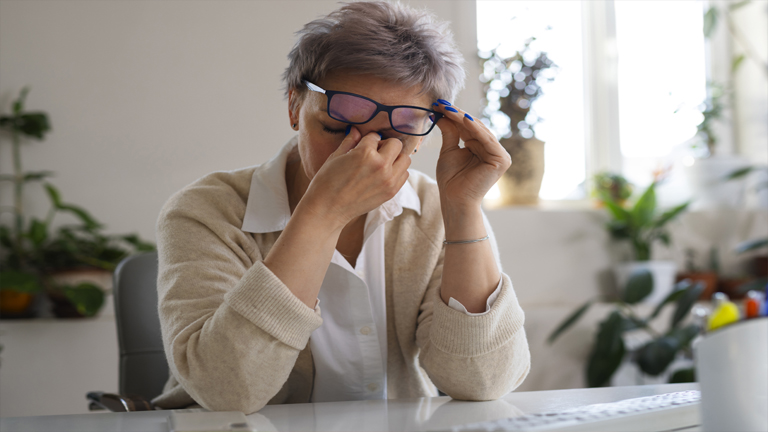The retina is a thin layer of tissue located at the back of the eye, responsible for converting light into neural signals that the brain interprets as vision. Retinal diseases encompass a range of conditions that damage this crucial part of the eye, leading to vision impairment or even blindness. Understanding these diseases, their causes, symptoms, and treatments is essential for early detection and effective management.
In this comprehensive guide, we will explore the most common retinal disorders, their risk factors, diagnostic procedures, and the latest treatment options available.
Must Check: Pink Eye (Conjunctivitis)
Common Types of Retinal Diseases
1. Age-Related Macular Degeneration (AMD)
Age-Related Macular Degeneration (AMD) is a leading cause of vision loss in older adults. It affects the macula, the central part of the retina responsible for sharp, detailed vision.
-
Dry AMD: Characterized by thinning of the macula and the accumulation of drusen (tiny protein deposits).
-
Wet AMD: Involves abnormal blood vessel growth under the retina, leading to leakage and scarring.
2. Diabetic Retinopathy
Diabetic retinopathy occurs in individuals with diabetes due to high blood sugar levels damaging retinal blood vessels.
-
Non-Proliferative Diabetic Retinopathy (NPDR): Early stage with weakened blood vessels.
-
Proliferative Diabetic Retinopathy (PDR): Advanced stage with new, fragile blood vessels that bleed into the vitreous.
3. Retinal Detachment
A retinal detachment is a medical emergency where the retina pulls away from its underlying tissue, leading to sudden vision loss. Causes include trauma, advanced diabetes, or severe myopia.
4. Retinitis Pigmentosa (RP)
Retinitis pigmentosa is a genetic disorder causing progressive degeneration of retinal photoreceptor cells, leading to night blindness and tunnel vision.
5. Macular Hole
A macular hole is a small break in the macula, often due to aging or eye injury, causing blurred or distorted central vision.
6. Retinal Vein Occlusion (RVO)
Retinal vein occlusion occurs when a vein in the retina becomes blocked, leading to hemorrhages and swelling. It can be:
-
Central Retinal Vein Occlusion (CRVO)
-
Branch Retinal Vein Occlusion (BRVO)
Symptoms of Retinal Diseases
Early detection of retinal diseases is crucial. Common symptoms include:
-
Blurred or distorted vision
-
Floaters or flashes of light
-
Dark spots in vision (scotomas)
-
Sudden vision loss
-
Difficulty seeing at night (nyctalopia)
-
Colors appearing faded
Causes and Risk Factors of Retinal Disorders
Several factors contribute to retinal diseases, including:
1. Age
Older adults are at higher risk for AMD and retinal detachment.
2. Diabetes
Poorly controlled diabetes increases the risk of diabetic retinopathy.
3. Genetics
Hereditary conditions like retinitis pigmentosa can lead to retinal degeneration.
4. High Blood Pressure & Cardiovascular Disease
These conditions can cause retinal artery or vein occlusion.
5. Eye Trauma or Surgery
Injuries or complications from eye surgery may lead to retinal tears or detachment.
6. Myopia (Nearsightedness)
Severe myopia increases the risk of retinal detachment.
Diagnosis of Retinal Diseases
Ophthalmologists use advanced techniques to diagnose retinal disorders:
1. Dilated Eye Exam
Eye drops widen the pupil, allowing the doctor to examine the retina.
2. Optical Coherence Tomography (OCT)
A non-invasive imaging test that provides cross-sectional retina images.
3. Fluorescein Angiography
A dye is injected into the bloodstream to highlight retinal blood vessels and detect leaks.
4. Visual Field Test
Measures peripheral vision loss, common in glaucoma and retinitis pigmentosa.
5. Amsler Grid Test
Detects macular degeneration by checking for distorted or missing grid lines.
Treatment Options for Retinal Diseases
Treatment depends on the specific condition and severity.
1. Medications
-
Anti-VEGF Injections (Lucentis, Eylea): Used for wet AMD and diabetic retinopathy to block abnormal blood vessel growth.
-
Corticosteroids: Reduce swelling in retinal vein occlusion.
2. Laser Therapy
-
Photocoagulation: Seals leaking blood vessels in diabetic retinopathy.
-
Panretinal Photocoagulation (PRP): Treats proliferative diabetic retinopathy.
3. Vitrectomy Retinal Diseases
Surgical removal of the vitreous gel to treat retinal detachment or macular holes.
4. Retinal Prosthesis (Bionic Eye) Retinal Diseases
An implant for advanced retinitis pigmentosa to restore partial vision.
5. Gene Therapy Retinal Diseases
Emerging treatments for inherited retinal diseases like Leber congenital amaurosis.
Retinal Diseases: Overview Table
| Disease | Primary Causes | Key Symptoms | Common Treatments |
|---|---|---|---|
| Age-Related Macular Degeneration (AMD) | Aging, genetics, smoking | Blurred central vision, distorted lines | Anti-VEGF injections, laser therapy, AREDS supplements |
| Diabetic Retinopathy | High blood sugar, diabetes duration | Floaters, blurred vision, dark spots | Anti-VEGF drugs, laser surgery, vitrectomy |
| Retinal Detachment | Trauma, severe myopia, aging | Sudden flashes, floaters, shadow in vision | Pneumatic retinopexy, scleral buckle, vitrectomy |
| Retinitis Pigmentosa (RP) | Genetic mutations | Night blindness, tunnel vision | Vitamin A palmitate, retinal implants (experimental) |
| Macular Hole | Aging, eye injury, vitreous traction | Central vision blur, distorted images | Vitrectomy, gas bubble insertion |
| Retinal Vein Occlusion (RVO) | Hypertension, glaucoma, blood clots | Sudden vision loss, retinal hemorrhages | Anti-VEGF injections, laser therapy, steroids |
Prevention and Lifestyle Tips for Retinal Health
-
Control Blood Sugar & Blood Pressure (Key for diabetic retinopathy).
-
Eat a Nutrient-Rich Diet (Leafy greens, fish, and antioxidants support retinal health).
-
Wear UV-Protective Sunglasses (Prevents oxidative damage).
-
Quit Smoking (Reduces AMD risk).
-
Regular Eye Exams (Early detection is crucial).
Conclusion Retinal Diseases
Retinal diseases can significantly impact vision, but early diagnosis and treatment can prevent severe vision loss. If you experience any symptoms like floaters, blurred vision, or sudden vision changes, consult an ophthalmologist immediately. Advances in medical technology, including gene therapy and retinal implants, offer hope for better management of these conditions.
By understanding the risks, symptoms, and treatments, you can take proactive steps to protect your retinal health and preserve your vision for years to come.
FAQs About Retinal Diseases
Q1: Can retinal diseases be cured?
Some, like retinal detachment, can be treated successfully, while others (e.g., AMD) can be managed to slow progression.
Q2: Are retinal diseases hereditary?
Certain conditions, like retinitis pigmentosa, have a genetic component.
Q3: How often should I get an eye exam?
Adults should have a comprehensive eye exam every 1-2 years, while diabetics need annual screenings.
Q4: Can lifestyle changes prevent retinal diseases?
Yes, a healthy diet, no smoking, and UV protection reduce risks.
Q5: What is the latest treatment for macular degeneration?
Anti-VEGF injections and biosimilar drugs are the gold standard for wet AMD.
By staying informed and proactive, you can safeguard your vision against retinal diseases and maintain optimal eye health.


